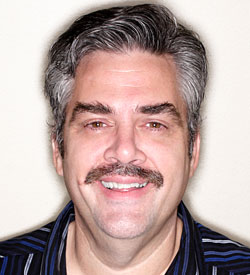
Music Row is fond of parties. We celebrate No. 1 songs at radio and throw Gold and Platinum sales parties. Performing Rights organizations give special honors for large airplay accumulations. And let’s not forget SoundScan, BDS, MediaBase, Country Breakout, Big Champagne, Pollstar and all the other yardsticks that attempt each week to answer the question, “Which artists are the most important and successful?”
There are so many career areas to consider: radio airplay; Internet activity via friends, followers, likes and circles; touring and tickets; merchandise sales; product endorsements; publishing; video views; album and track downloads; media exposure via print, TV, etc. And adding to the complexity, every successful career balances these factors using a different formula. Until recently our industry has relied upon SoundScan and the mainstream radio charts to rank weekly artist activity. But is that still enough or do we need a more comprehensive set of activity gauges?
“Soundscan album sales and radio charts are still an important yardstick,” says Average Joe’s Entertainment President Tom Baldrica. “Any time you can measure what people are spending their hard-earned dollars on, that is an ultimate piece of research. But the digital download chart is also important and we should be considering hard ticket sales. Merchandise numbers are important plus ringtones and ring backs, or joining a fan club. Anything that generates dollars becomes a measuring stick because that is how you know if you are cutting through.”
“Two years ago every Wednesday morning I woke up at 5 a.m. to check the SoundScan charts and write reports about what was going on,” says Peter Strickland, Sr. VP Brand Management & Sales, Warner Music Nashville. “Now I choose to run 5 miles, hit Starbucks and wait till I get in the office before looking at the chart. What excites me today is our daily social media numbers that help me see how our various artist revenue streams are moving. We get reports from the road on a daily basis on tours where we are servicing merchandise. Of course SS is still important, but those kinds of areas capture my attention now. Radio remains a big tool as well. I don’t know if streaming services will take a bite out of that, but for now radio is important.”
Social networks have developed into an efficient means of delivering on the Internet’s marketing promise of allowing one-to-one communication. But how should that data be treated when compared with actual purchases, for example?
“The social networks are the ultimate street team and evangelist for your cause whether it is selling music or trying to overthrow a government,” says Baldrica. “It’s an important piece in the process of building that one-on-one relationship. The big question is, does it help move fans from an interested person to an interested consumer, that’s the leap you want people to take. Social Networks give you a chance to quickly tell your story. It is grass roots cubed in the sense of how fast it can move.”
Strickland ranks the social networks importance by looking between the lines, in a sense, but notes that it requires artist input to be successful. “It’s your continued day-to-day, week-to-week growth that tells the story,” he says. “What plays a major role in that growth is the artist participation and engagement with the fan. It doesn’t happen on its own. The music alone does not drive it. And that skill is a learning curve for every artist that comes to the marketplace now. There are varying levels of fan participation which you can see that tell the story of what’s working and what’s not. Eventually radio will pay more attention to all these numbers we throw their way. When all the yardsticks collide, then you know you’ve succeeded.”
Average Joe’s Colt Ford is an example of an artist which doesn’t have all the traditional yardsticks, yet has a growing career. “If you’re talking about downloads, physical discs, tickets, merchandise sold plus sponsorship deals he checks all those boxes,” offers Baldrica. “It’s a real successful career, but missing the one ingredient that used to be the end-all, be-all for success—mainstream radio. But there’s more to the story, Paul Harvey. We need to dig deeper, to find all the facts. And that’s not just in the music business, people in all industries are finding new ways to put the biscuit in the basket.”

Category: Exclusive, Featured, Label, Sales/Marketing, Weekend
About the Author
David M. Ross has been covering Nashville's music industry for over 25 years. dross@musicrow.comView Author Profile




